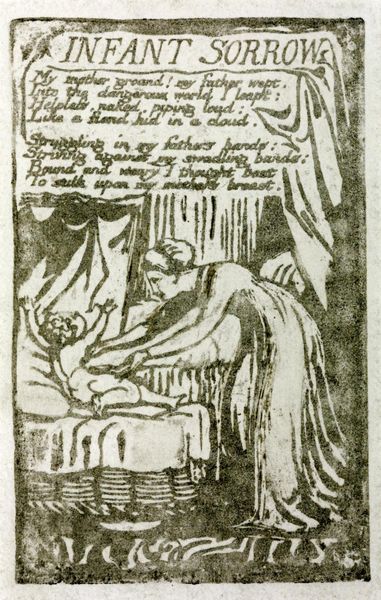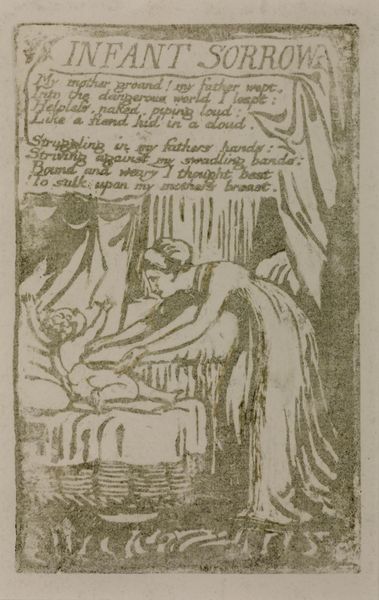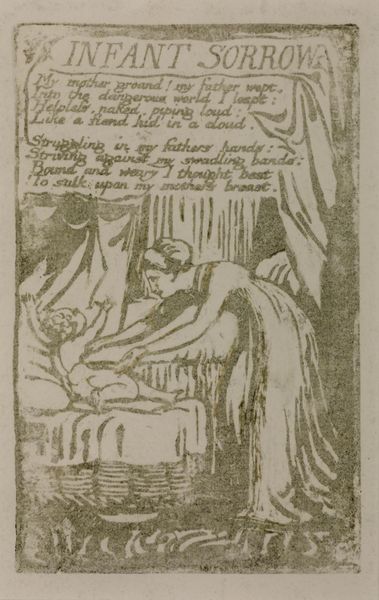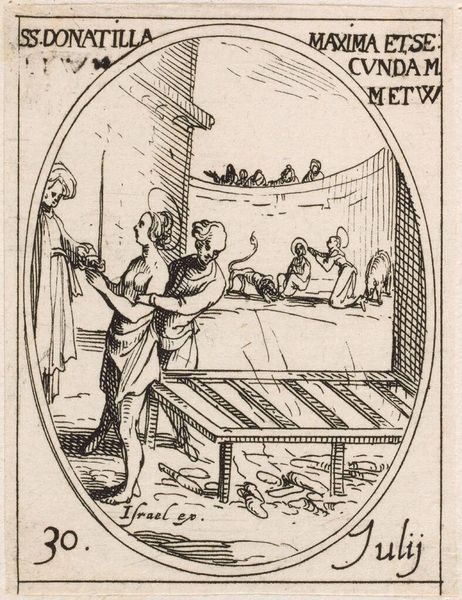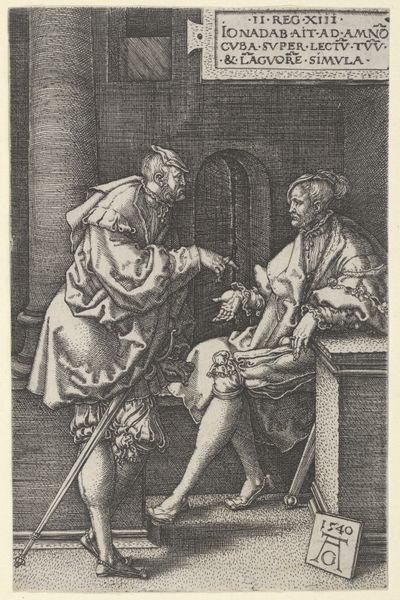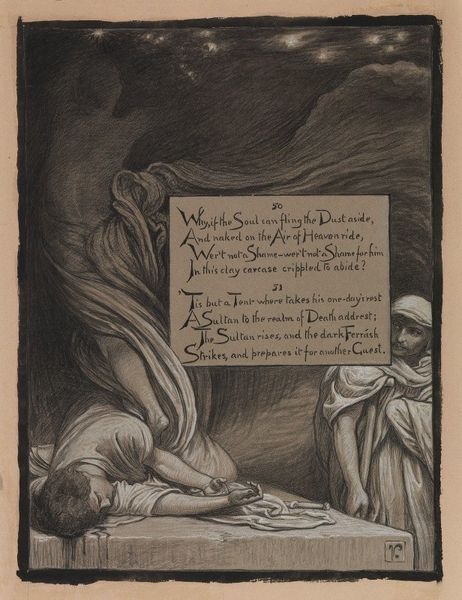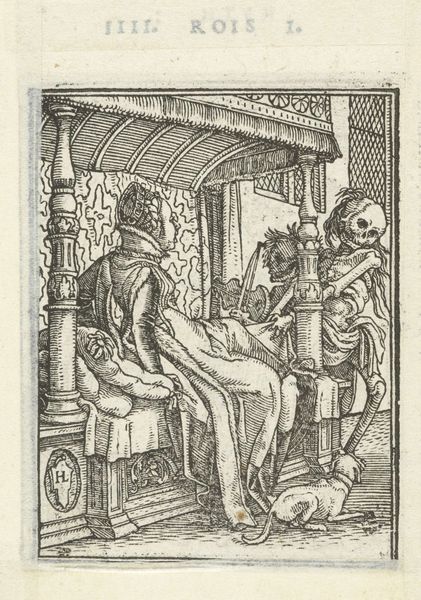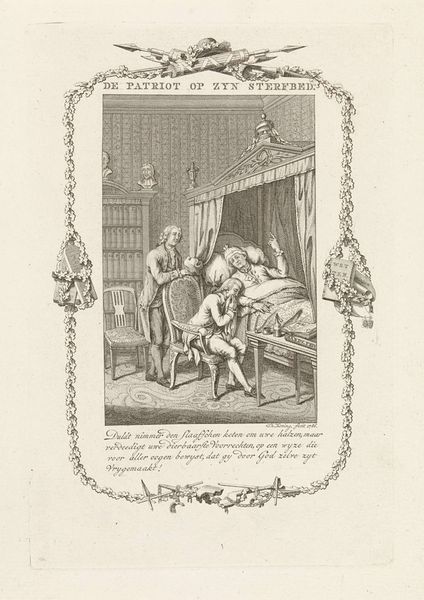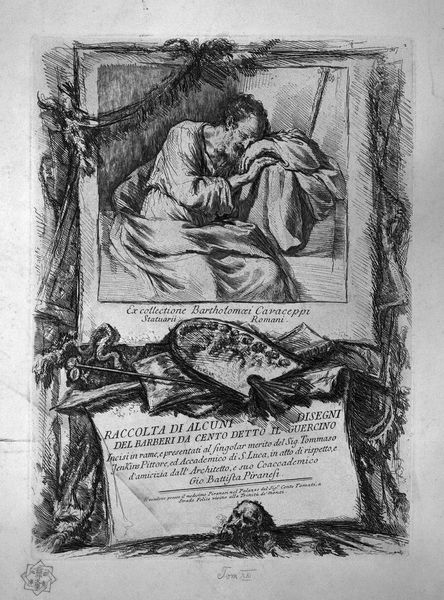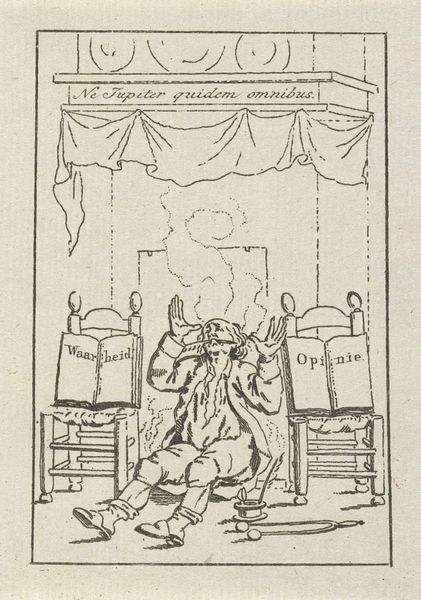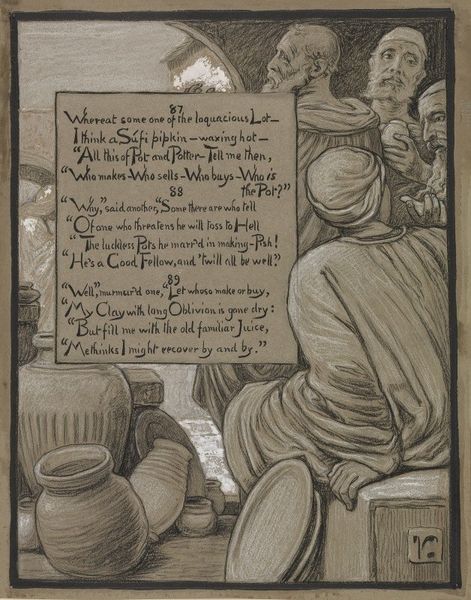
Dimensions: image: 112 x 97 mm
Copyright: CC-BY-NC-ND 4.0 DEED, Photo: Tate
Curator: This is William Blake’s print, "Infant Sorrow," part of his "Songs of Innocence and of Experience." The work dates around 1794 and is rendered in relief etching. Editor: It evokes such a stark, unsettling feeling. The composition, with its dense lines, feels almost claustrophobic, trapping the figures within the frame. Curator: Note how Blake uses visual symbols; the swaddling bands, the weeping figures—they all speak to a sense of confinement and the loss of freedom at birth. Editor: The contrast between the dark lines and the white spaces creates a real sense of tension. The mother's pose, though nurturing, appears almost strained. Curator: The poem, etched alongside the image, amplifies the feeling. The infant's cry, the parents' sorrow—it's all a commentary on the burdens of existence, symbolized in this single scene. Editor: Seeing it through that lens, the image resonates with a powerful message, a cultural script that frames birth as a sorrowful event, marking a loss of innocence. Curator: Indeed, it is a complex interpretation, a testament to Blake’s profound insight.
Comments
tate 8 months ago
⋮
http://www.tate.org.uk/art/artworks/blake-songs-of-innocence-and-of-experience-infant-sorrow-a00035
Join the conversation
Join millions of artists and users on Artera today and experience the ultimate creative platform.
tate 8 months ago
⋮
This poem is a contrast to 'Infant Joy' from 'Songs of Innocence'. The child is a person. Accompanied by pain and tears he is born into a dangerous world, though the trappings of comfort and prosperity around his bed belie this. Even in his first natural state of naked helplessness the child conceals what parents and others would regard as an evil spirit ('fiend'). The pressures of conformity ('my swaddling bands') will release this spirit in 'struggling' and 'striving against'. The act of sulking on his mother's breast suggests only a brief respite before the 'fiend' (properly, the child's true individuality) finally asserts itself in adulthood. Gallery label, July 1994
